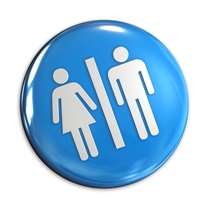
Interstitial Cystitis/Painful Bladder Syndrome: Symptoms and Management
2 CommentsPainful bladder syndrome (PBS), also called Interstitial cystitis (IC), is a condition that causes recurring discomfort in the bladder or pelvic region. It can affect children, men, and women, but is much more common in women. Interstitial cystitis can have a significant impact on quality of life. While there are no treatments to cure the condition, there are many interventions available to manage symptoms and improve quality of life.
 Symptoms
Symptoms
Symptoms of interstitial cystitis can vary from person to person and can also vary from episode to episode. They include but are not limited to:
- Pain in the pelvis above the pubic bone or in the perineal area
- Increased urgency to urinate even when the bladder is not full
- Increased frequency of urination
- Pain with sexual intercourse
Symptoms of interstitial cystitis can resemble those of a chronic urinary tract infection, however urine cultures with interstitial cystitis will be negative and patients will not respond to antibiotic therapy.
Causes
The cause of interstitial cystitis is unknown. Researchers are working to identify and understand the causes and develop treatments for IC. Factors that have been suggested are autoimmune reaction, heredity, infection, allergy, and systemic inflammation, although none of these are proven causes of IC.
Diagnosis
The diagnosis of IC is one of exclusion. There is not a definitive test for IC. Because IC/PBS symptoms resemble those of other bladder disorders, doctors must rule out other conditions before considering it as a diagnosis. Some test that may be performed to assist with diagnosis include urine culture, cystoscopy, biopsy of bladder wall or urethra, and distension of the bladder wall under anesthesia.
Treatments
Since the cause of IC is unknown, treatment is designed to control or manage symptoms. Treatment can include:
- Bladder distension: This procedure is often used for diagnosis but has been shown to cause improvement in symptoms for some patients.
- Bladder installation: The bladder is filled with dimethyl sulfoxide for 10 to 15 minutes and then is emptied.
- Oral Drugs including Elmiron, Aspirin, Ibuprofen, tricyclic antidepressants (Elavil), antihistamines, and narcotic analgesics
- Electrical nerve stimulation in the form of TENS
- Diet modification: Keeping a food diary and eliminating foods that potentially cause bladder irritation including but not limited to tomatoes, alcohol, spicy foods, chocolate, caffeinated beverages, citrus, acidic foods, and artificial sweeteners can decrease bladder symptoms in some patients.
- Bladder training: Bladder training can help to decrease urinary frequency, which is common with IC. It consists of voiding on a schedule and utilizing relaxation techniques and urge suppression techniques to avoid urinating in between scheduled times. Time between voiding is then slowly increased to decrease urinary frequency.
- Smoking cessation and exercise
- Physical therapy: Patients with IC often develop muscular and fascial restrictions in the abdomen, pelvis, pelvic floor, thighs, groin, and buttocks. Pelvic floor therapy which consists of the manual release of muscle restrictions and trigger points in the pelvic musculature can decrease pain, frequency and urgency associated with IC. Therapists will also address the muscular and fascial restrictions in surrounding areas and prescribe a home exercise program including stretching of tight musculature and strengthening exercises.
- Surgery: Surgery is a last resort in the treatment of IC and should only be considered after all other treatments have failed and pain is disabling.
If you think that you may have IC, contact your physician to discuss your options.


2 Comments
patti feldstein
my Dr. has prescribed pt for myofascial pain of the pelvis. do you provide it?
Stacy Koenigs
Patti,
I would recommend physical therapy to release the soft tissue restrictions to assist you with reducing your pain. A home program will be provided to you to assist with self release techniques, stretching and any other exercises that you would need.